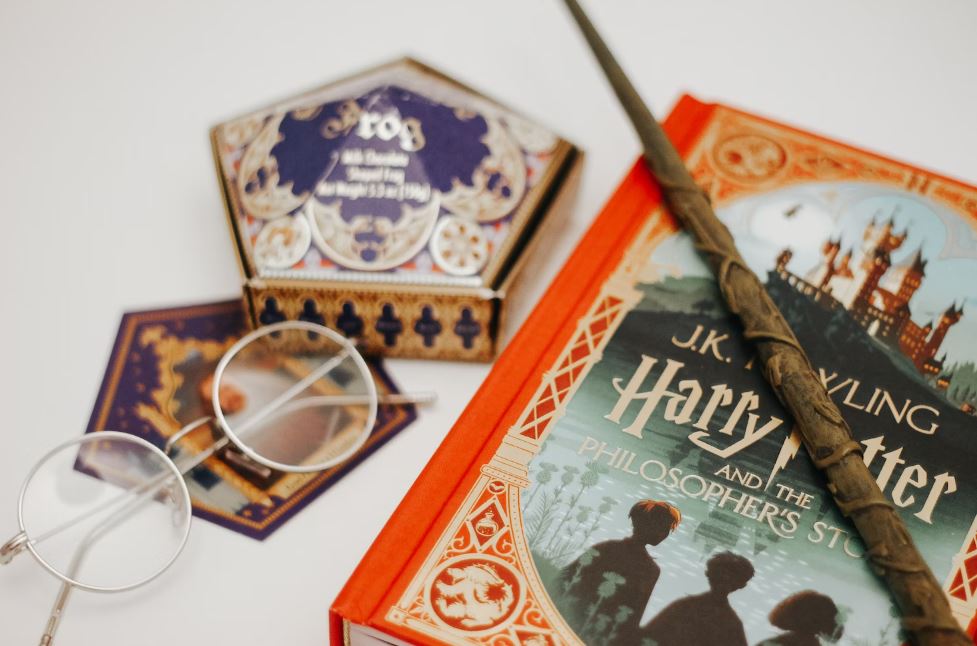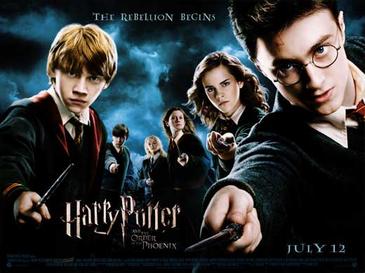Harry Potter comprises a collection of seven fantasy novels penned by British writer J. K. Rowling. These books recount the adventures of a young wizard named Harry Potter and his companions, Hermione Granger and Ron Weasley, all of whom are enrolled as students at Hogwarts School of Witchcraft and Wizardry. The central narrative revolves around Harry’s ongoing conflict with Lord Voldemort, an evil sorcerer seeking immortality, with ambitions to overthrow the wizarding governing body, known as the Ministry of Magic, and to subjugate both wizards and Muggles (non-magical individuals).
Initially, the series found publication in English by Bloomsbury in the United Kingdom and Scholastic Press in the United States. Harry Potter encompasses a variety of literary genres, including fantasy, drama, coming-of-age fiction, and the traditional British school story, blending elements of mystery, suspense, adventure, horror, and romance. Within the realm of Harry Potter, numerous themes are explored, and it is rich in cultural symbolism and references. According to Rowling, the primary theme is the concept of death, while other prominent themes encompass issues such as prejudice, corruption, and mental instability. As the series became beloved worldwide, people ranked the series’ movies, and we will also delve into that aspect.
Ranking the Harry Potter Movies from Most to Least Magical
Attempting to Determine the Finest Harry Potter Films is as Challenging as a Triwizard Tournament Task. Preferences for the Wizarding World movies vary widely, with some favoring a darker tone, while others seek more whimsy in their fantasy. As a result, everyone’s ranking is bound to be unique.
What makes ranking the best Harry Potter movies particularly daunting is that multiple generations of wizards essentially grew up with these films. With the addition of the three existing Fantastic Beasts installments, we are dealing with profoundly influential cinematic memories. It’s a kind of magic that even Dumbledore himself would likely caution against attempting to fully comprehend.
1. Harry Potter and the Deathly Hallows – Part 2 –
The Battle of Hogwarts in this film is nothing short of magnificent. Neville emerges as a hero, courageously beheading a snake. Molly delivers a memorable line reminiscent of “Aliens” when confronting Bellatrix Lestrange, and Ralph Fiennes portrays Lord Voldemort with crowing triumph and superb artistry. “Deathly Hallows – Part 2” serves as a fitting and compelling finale to the series, despite a somewhat awkward scene at the end where 16-year-olds are made to appear 40. Hogwarts, once a place of safety and happiness, transforms into a battleground under the skilled direction of David Yates. He effortlessly guides us through thrilling set pieces where the specter of death looms over characters we’ve watched grow over nearly a decade. The tragic fall of Snape is poignantly portrayed, seen through frosted glass. Harry’s realization and acceptance of his true destiny evoke genuine heartache. This installment possesses a sense of gravitas far removed from the carefree feasts of the earlier films. Moreover, “Deathly Hallows – Part 2” embarks on a profound journey for the series, unflinchingly delving into the darker aspects of J.K. Rowling’s world. As Albus Dumbledore wisely said, “happiness can be found even in the darkest times if one only remembers to turn on the light.”
2. Harry Potter and the Prisoner of Azkaban –
This film, the third installment in the Harry Potter series, stands out as the finest of the franchise, and no, there’s no need to give me that incredulous look as if I’ve just cast a bothersome spell on you. In this cinematic adventure, director Alfonso Cuarón, known for his work on “Children of Men,” skillfully weaves the film’s dark atmosphere with the inherently unsettling plot involving an escaped maniac relentlessly pursuing Harry with murderous intent. In contrast to the previous two movies directed by Chris Columbus, which maintained a relatively bright tone even as the shadow of Voldemort loomed, Cuarón brings a notably darker and more macabre ambiance to the narrative. “Azkaban,” back in 2004, was a breath of fresh, somber air, and its impact endures to this day. The attention to detail in this film is remarkable. Harry’s accommodation at The Leaky Cauldron is depicted as grimy and dust-covered, Aunt Marge’s inflation is portrayed with delightfully unsettling precision, and a bird meets an unfortunate fate at the hands (or branches) of the Whomping Willow. Harry’s initial journey on The Knight Bus becomes a surrealistic nightmare narrated by Lenny Henry, creating an eerie and memorable experience: “If you have the pea soup, make sure you eat it, before it eats you…” But the film truly shines with its introduction of key characters and elements. Gary Oldman embodies Sirius Black with exceptional depth, Timothy Spall portrays the sniveling Wormtail with finesse, and the film unveils the chilling presence of the Dementors. Furthermore, “Prisoner of Azkaban” delivers one of the most impressive werewolf transformations ever depicted on screen.
3. Harry Potter and the Order of the Phoenix –
This installment, often referred to as the book where Harry spoke emphatically, marks a significant turning point in the magical series. Harry embodies sadness and angst as Voldemort resurfaces following the tragic loss of Cedric Diggory in “Goblet of Fire,” throwing the wizarding world into captivating turmoil. However, the standout performance here is by the brilliant Imelda Staunton as Dolores Umbridge, the official appointed to oversee a ‘rogue’ Hogwarts, while the Ministry of Magic denies the return of the Dark Lord. Umbridge is a genuinely unsettling presence. Surrounded by kittens, pink decor, and doilies, she cruelly inflicts physical torment on students by etching lines directly onto their skin. Her gleeful malevolence would earn her top marks at any supervillain academy. Notably, this film is directed by David Yates, who possesses an innate understanding of Rowling’s world. He seamlessly blends the humor and joy of Hogwarts with the looming threat of incoming murderous dark wizards. The film skillfully interweaves the comedy of Umbridge’s ignored Educational Decrees with the pain of Harry’s first romance, the encroaching darkness beyond Hogwarts’ boundaries, and the ultimately poignant conclusion that leaves young Mr. Potter, once again, feeling profoundly isolated in the world.
4. Harry Potter and the Half-Blood Prince –
In “Harry Potter and the Half-Blood Prince,” director David Yates truly embraced the darker aspects of the series. This installment, mirroring the tone of the books, takes Harry into a realm of darkness like never before. It features muggle murders as Death Eaters swarm London’s Millennium Bridge, an assault on the Weasley home, the eerie backstory of Tom Riddle, and the heart-wrenching demise of Dumbledore – a moment that left fans in tears. How could J.K. Rowling subject us to such emotional turmoil? While Hogwarts still provides a semblance of safety, the looming peril outside its gates is palpable. Amidst the chaos, there’s a prominent theme of teenage hormones, with characters grappling with their emotions and desires, perhaps as a way to find solace in an uncertain world threatened by dark wizards. The ‘will they/won’t they’ relationship between Harry and Ginny is delicately portrayed amid the chaos, adding depth to the characters. Additionally, “The Half-Blood Prince” introduces the brilliant Jim Broadbent as Professor Horace Slughorn, a character who once provided young Voldemort with dangerously valuable information. As Harry and Dumbledore collaborate to uncover Voldemort’s Horcruxes, the film weaves a thrilling narrative, masterfully handled by Yates. It delves deep into the darkness of the wizarding world, crafting a storyline that is both intense and genuinely frightening, unapologetically embracing the somber tone of the series.
5. Harry Potter and the Deathly Hallows – Part 1 –
In a striking shift, the series, which originally began as children’s entertainment, enters its darkest chapter. Themes of death, rage, murder, torture, and the heart-wrenching loss of Dobby loom large. There is no journey to Hogwarts for the first time in the series, and life becomes significantly more dangerous for our exhausted trio of magical protagonists. The actors, too, rise to the occasion, delivering performances steeped in genuine emotion and tragedy. This embarks on a remarkable and deeply emotional journey, testing the actors’ abilities and imbuing the story with a strong sense of seriousness. The decision to split the final book into two films proves to be a wise one, as director David Yates meticulously paves the way for the culmination of the nearly decade-long franchise. Apart from the heartrending losses of Dobby, Mad-Eye Moody, and Hedwig, notable highlights include a beautiful animated sequence that elucidates the tale of the three brothers and the legendary Deathly Hallows. Additionally, Helena Bonham Carter delivers a dynamic performance as Bellatrix Lestrange, who enters the follow-up film bearing the blood of Dobby on her hands, along with the memory of Sirius Black from earlier in the series.
6. Harry Potter and the Sorcerer’s Stone –
The first installment in the franchise, “Harry Potter and the Sorcerer’s Stone,” marks a fantastic starting point, even though it may not rank as the best in the series. Evidently, the film’s primary aim was to lay the foundation for the epic saga that was to follow, and in hindsight, this becomes apparent. There are numerous iconic moments in “Sorcerer’s Stone” that both fans and newcomers can cherish as they witness Harry Potter’s inaugural journey to the big screen. We are introduced to Hagrid, the gentle giant who tends to Hogwarts’ magical creatures. We embark on the Hogwarts Express alongside Harry for his first ride to the school, and we have the pleasure of meeting his best friends, Ron and Hermione. Moreover, we are granted our initial glimpse of the enchanting Hogwarts school itself. While “Sorcerer’s Stone” undeniably plays a vital role in the franchise by laying its essential groundwork – for without it, the Harry Potter phenomenon wouldn’t exist – its central storyline may fall slightly short in terms of magical and action-packed elements when compared to the subsequent films in the series, which is why it finds itself in the sixth position in our ranking.
7. Harry Potter and the Goblet of Fire –
One well-known fact in the realm of book-to-movie adaptations is that many of your beloved moments from the source material are inevitably cut, trimmed, or entirely omitted. While this reality doesn’t make the process any easier for fans, it became particularly evident in “Harry Potter and the Goblet of Fire,” directed by Mike Newell, known for the movie “Four Weddings and a Funeral” was the first-time significant changes were necessary due to the immense size of J.K. Rowling’s book, which happened to be the longest in the series at that time. The plot thickens as Harry’s name unexpectedly emerges from the Triwizard Cup, compelling him to enter a dangerous competition against students from rival magical schools. Amidst the necessary truncations, there are still numerous enjoyable moments in the film, such as the students attending their first dances, Brendan Gleeson’s spirited portrayal of the grizzled Mad-Eye Moody, and the unraveling history of the Death Eater known as Barty Crouch. However, much of the movie feels like a condensed highlights reel. For instance, the introductory sequence at the Quidditch World Cup appears rushed and strained, highlighting the formidable challenge of fitting Rowling’s meticulously crafted narrative into a cohesive story under the constraints of a three-hour runtime. Nevertheless, the film manages to lead viewers to an exceptional final showdown with a newly reborn Lord Voldemort, setting the stage for a notably dark trajectory in the following installments.
8. Harry Potter and the Chamber of Secrets –
Despite laying the foundation for the subsequent movies, it’s evident that Chris Columbus’ initial forays into the wizarding world aren’t faring exceptionally well in our ranking of the best Harry Potter movies. While Chris Columbus is celebrated for directing classics such as “Home Alone” and “Mrs. Doubtfire,” his initial Harry Potter adaptations tended to closely follow the original books, resulting in a somewhat predictable cinematic experience. It’s like experiencing magic with training wheels. “Harry Potter and the Chamber of Secrets,” is far from a subpar installment. It still boasts elements like a giant murderous snake lurking in the castle’s walls (Basilisk-y business), thrilling Quidditch matches, and the characters in their endearing, youthful stage. Additionally, the casting of Kenneth Branagh as the delightfully inept Professor Gilderoy Lockhart is a shining example of the British talent attracted to the franchise. In contrast, the series doesn’t truly delve into its darker themes until “Prisoner of Azkaban,” “Chamber of Secrets” fearlessly tackles the disturbing mystery at its core, even if the pacing is somewhat plodding, given its substantial 161-minute runtime. Much like a Blast-Ended Skrewt with its stinger removed, it’s magical but perhaps a bit too cautious.
Conclusion
For ten years, the Harry Potter movies not only made a lot of money but also earned excellent reviews for every single one of them. It’s one of the most successful film series ever and even led to a spinoff. But fans love to share their thoughts on which movie is their favorite, and that’s what this article is all about. It’s about how fans rank the movies and discuss them.





